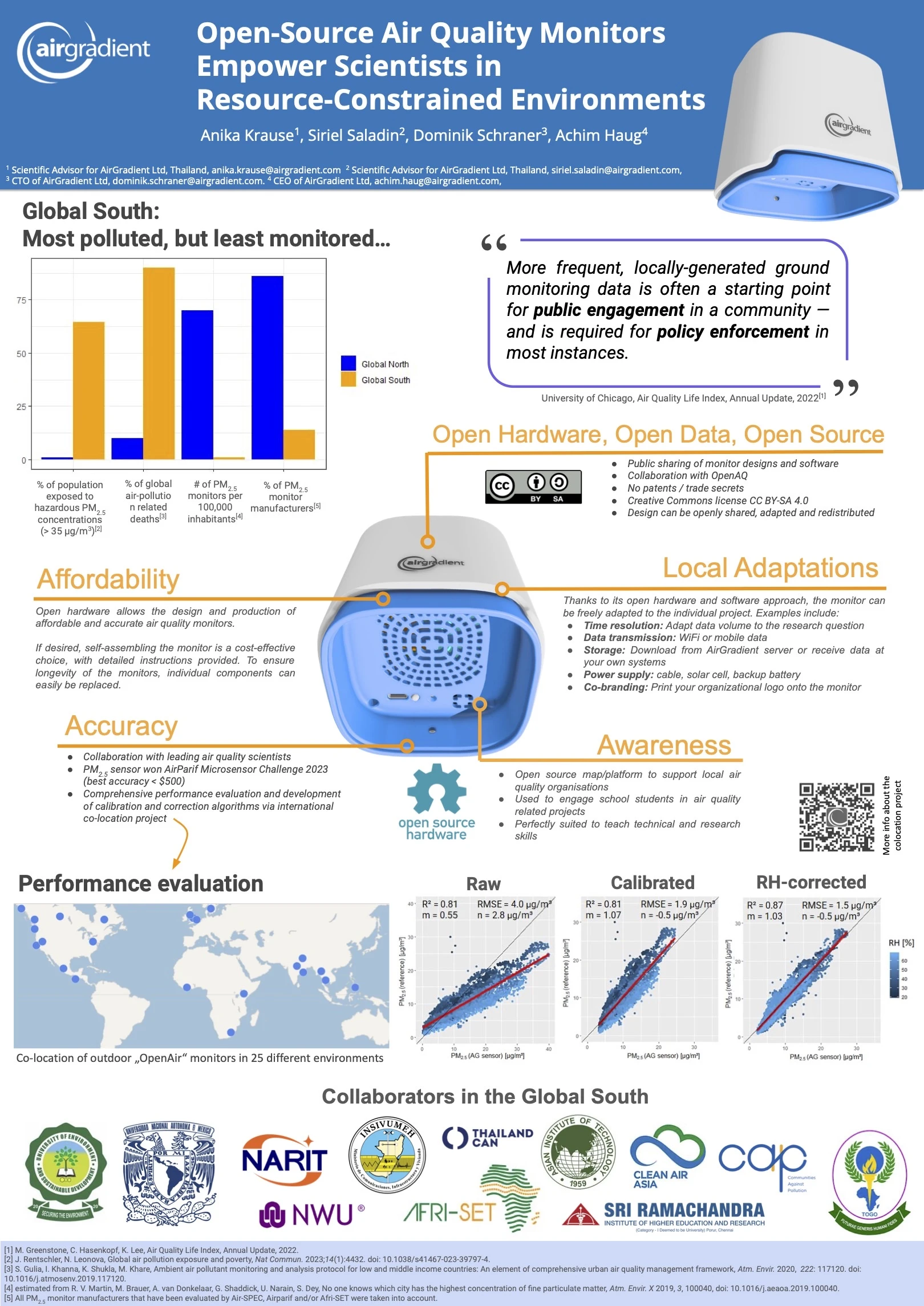Open and Accurate Air Quality Monitors
We design professional, accurate and long-lasting air quality monitors that are open-source and open-hardware so that you have full control on how you want to use the monitor.
Learn MoreToday we were supposed to take part in the AGU’s annual meeting 2023 with our poster “Open-Source Air Quality Monitors Empower Scientists in Resource-Constrained Environments”. The American Geophysical Union (AGU) is a huge nonprofit organization that supports over half a million earth and space science enthusiasts and professionals. They host a large community of environmental scientists, including those focused on air pollution.
Each year, the AGU’s annual meeting convenes >25,000 scientists, educators, policymakers, technology developers, and journalists from 100+ countries, making it one of the largest academic conferences in the world. The AGU is the place to be if you want to share exciting research in the field of air quality.
Wait, wasn’t 2023 last year?
Correct! The in-person meeting of the AGU already took place in San Francisco from 11th to 15th December 2023. But due to the conference’s immense size and the abundance of presenters, not everyone could share their work during the event. As a result, online presentations have been scheduled for this week.
And what means “supposed to take part”?
Well… The good news is that our abstract got accepted, we registered as AGU members and created our poster in time. However, we somehow must have failed to re-confirm our attendance in the frenzy of developing temperature correction algorithms….
Free AGU content without the membership ;)
While we are sad about missing the poster session at the AGU, the good news is that we have decided to share our poster. This way, everyone has access, whether AGU members or not!
We are happy to receive any feedback or questions you might have!

Environments Most global air quality monitor manufacturers are based in the developed world and primarily see resource-constrained locations as an export market for their product. The proprietary and closed nature of their products and distance to the resource-constrained locations make it very difficult for involvement of local scientists and local capacity development. We have developed a robust and tested open-source low-cost air quality monitor design that allows scientists in resource-constrained environments to adapt, and extend this design to their specific local environment. The open-hardware paradigm makes this design very affordable and much more accessible compared to traditional air quality monitors. As a result these scientists are able to not only collect data more easily but also create specific value add to the scientific discovery process. This leads to a knowledge advantage as they can better respond to their unique local requirements with software or hardware adaptations of this open-source design. As a result, these scientists are less dependent on researchers from locations with easier access to resources, and thus less susceptible to non-collaborative and extractive scientific practices. Implementations of this approach in Thailand, South Africa and Ghana can demonstrate substantial local scientific value added.
Curious about upcoming webinars, company updates, and the latest air quality trends? Sign up for our weekly newsletter and get the inside scoop delivered straight to your inbox.
Join our Newsletter
We design professional, accurate and long-lasting air quality monitors that are open-source and open-hardware so that you have full control on how you want to use the monitor.
Learn More